Caroline150
New member
- Joined
- Nov 7, 2021
- Messages
- 2
- Points
- 1
Hi, basic question…but I cannot work out where to top up my oil on a 1.2 Eco Panda 2010. Any help greatly appreciated!
Hi, and welcomeHere's the procedure for checking the engine oil level (use 10W-40 semi synthetic).
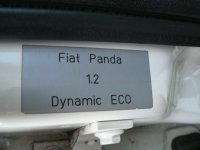
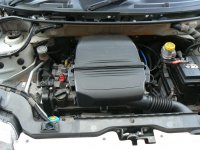

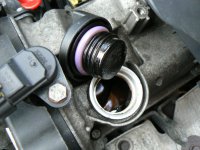
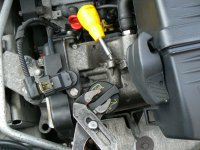
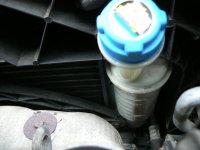
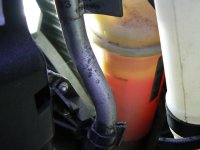
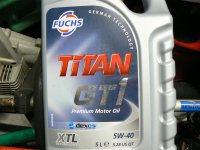
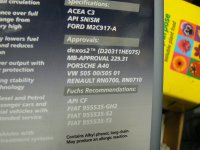
Oops, sorryThis is the wrong oil specification for the OP's car. The recommended oil for a 2010 Dynamic Eco is 5W40 fully synthetic C3.
Oops, sorryI was aware the Euro5 VVT engine was introduced in 2010, but had never stopped to consider it might specify a different grade of oil.
Seems a bit strange that this later oil spec also presumably applies to the 2010 Euro4 engine, when my 2004 model specifies 10w-40.
The transmission oil in the 2009 handbook (75w-85) is also different to 2004 (75w-80). Odd.
Seems a bit strange that this later oil spec also presumably applies to the 2010 Euro4 engine
I like an oil which is "runny" at low temperature so that it can circulate rapidly at start up. I find that the 5W-40 minimizes cam follower "rattle" on cold starts, especially if the engine hasn't been run for a few days.
I doubt there are any relevant mechanical differences that would preclude using 10W40 if you wanted to; this isn't an oil sensitive design. By now, these older cars have likely been serviced using a variety of fluids, and generally don't seem any the worse for it.
I'd agree; if I lived in Scotland, I'd give serious thought to using an 0W30 in the 169.
This is also a good reason to avoid using cheap oil filters of duboius quality, which may not have an effective anti drainback valve.
the latest euro 6c or whatever it is run ,0-30 oil I believeOops, sorryI was aware the Euro5 VVT engine was introduced in 2010, but had never stopped to consider it might specify a different grade of oil.
Seems a bit strange that this later oil spec also presumably applies to the 2010 Euro4 engine, when my 2004 model specifies 10w-40.
The transmission oil in the 2009 handbook (75w-85) is also different to 2004 (75w-80). Odd.
Sorry for posting on an old post, but I need some help please. I'm trying to find a replacement Oil cap for my Panda. It's the same as the one in this post, screw fit with purple seal, and code 1017016 on the bottom, as you can just make out in the above photo. However that number doesn't seem to find any matches online, and the closest Fiat one I can find online is Part number 71740676. Can anyone confirm the correct part number for this cap please, or does anyone have a spare one?? Urgently needed as I accidentally left it loose after topping up the oil today, and it dislodged and is now in several parts!Hello Caroline, I can speak with some authority on this as our Becky is a 2010 Panda 1.2 Dynamic Eco. She even has a sticker on the driver's door pillar to prove it!
View attachment 221370
Under the bonnet looks like this:
View attachment 221371
The unit with the yellow sticker on it's pipe at the left rear is the air con compressor. right at the front is a blue cap for the radiator expansion tank (more on that in a minute) and half way between them is the oil filler cap. This is the oil filler cap:
View attachment 221373
If you look just to the left of the oil filler cap you can see a fitting with an electric wire coming out of it - that's the camshaft position sensor so be careful not to damage it or it's wiring. When you remove the oil cap it looks like this:
View attachment 221374
Does your's have a "pretty" purple "O" ring seal too? You'll notice that inside the hole there is an oil baffle so don't pour the oil in too quickly or it may overflow due to the restriction of the baffle.
I too find that the cap is stiff to undo and I sometimes have to use a pair of water pump pliers to get enough twist on it - as seen here:
View attachment 221375
I haven't shown that I'd usually use some thick rag or cardboard under the plier's jaws to protect the plastic of the cap - it's not all that strong so go easy. The cap on my engine is "torque limited" - like a modern petrol filler cap - so you just keep tightening it until it slips with a loud "click".
Our older 60 hp engines do not have the VVT camshaft pulley which the later 69 hp engines do have. Just for your info, It's not difficult to identify the later engine as it has an electrically operated solenoid valve screwed into where the end of the wee yellow handled screwdriver - in the last picture - is pointing: Our earlier engines just have a blanking plug here.
We have one big advantage over that newer engine which is that if something goes catastrophically wrong with the cam belt and it breaks or becomes somehow damaged it won't right off the engine - which is what often happens with the later engine. Our earlier engine is also a more pleasant drive, in my opinion, as, although not quite so ultimately powerful, it develops it's torque at lower revs so you get a more docile and driveable engine for "pootling" around town.
JRK talks above about the radiator expansion tank being down the side of the radiator. Here it is on Becky:
View attachment 221376
It's a quite solid white plastic and difficult to see the level of coolant through. If you shine a bright light through it you can then see the level much more easily:
View attachment 221377
I'm mentioning this because these engines do not like running low on coolant. In fact they are a very robust wee unit and will put up with a lot but they really don't like running low on coolant and may blow the head gasket if you ignore it. I check ours every weekend that way if a small leak starts I can get on top of it before any expensive damage is caused.
Lastly, oil. The Fiat FIRE family of engines are not especially critical of their oil but I would always use an oil which meets Fiat's recommended spec. (5W-40 to ACEA C3 for our engines) Fiat's own spec number is 955535-S2. I'm very interested in oils and for a number of years now I've been running the family cars on Fuchs oil products. They make a good quality oil at a price point rather below the market leader big names like Castrol, Shell, Mobil, etc, etc. and I'm very pleased with it:
View attachment 221378
View attachment 221379
You can often save some extra cash by keeping an eye out for special deals on Ebay. You'll find your local Halfords or trade motor factor will almost certainly stock a suitable reasonably priced oil too.
I hope that was useful and that I haven't overwhelmed you with too much info? If You'd like me to clarify any of it please do just ask.
Thanks koalar, appreciate the quick reply. Have one on order from Amazon for speedy delivery as couldn't find one in stock at any of my local auto parts shops.71740676 is the cap I normally see
Later pandas, puntos and 500 are all the same
I would say I was 100% sure but Fiat have a habit of throw an odd ball part into the mix
